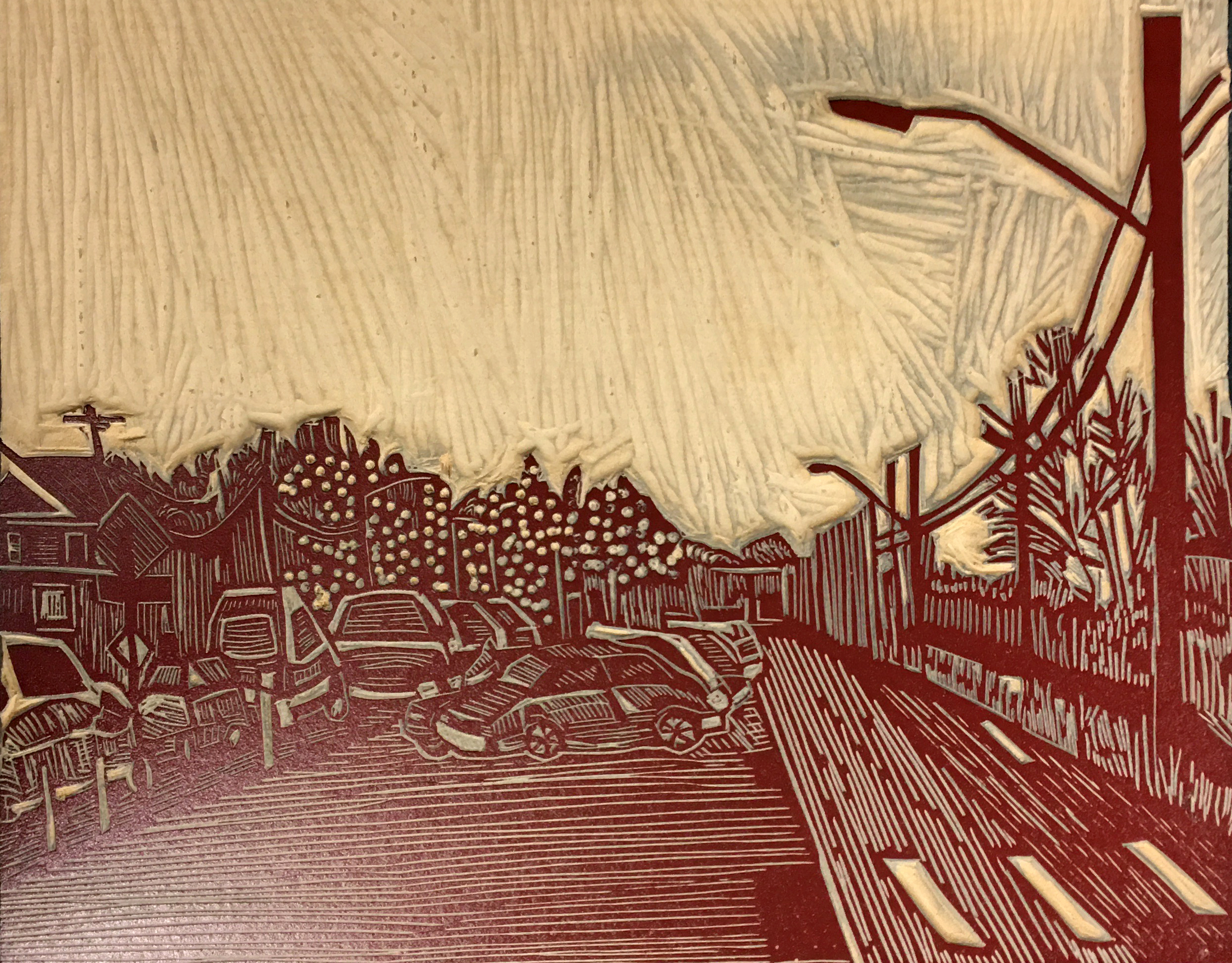Event Info
This class will take place on:
- Thurs, June 24th, 1:00–3:00pm ET
Linoleum cutting, the most accessible of print mediums, lends itself to bold graphic effects as well as subtle mark making. Linoleum prints can be made at relatively low cost and can be editioned in the home studio with minimal equipment.
Students will learn various strategies for drawing, designing an image, planning a print, cutting, and printing. I will offer advice on tool choice and materials. I will show examples of my own work and the work of others in how images can be rendered in linoleum, and how mark marking can be used to create texture, space, and form.
Required materials:
- Plexiglass, for rolling out the ink.
- Paper; text weight and thinner Japanese style paper works best for printing at home but you can try other kinds/ weights of paper
- Block-printing ink/letterpress ink-any kind, we will talk about the options. There are water based options for working at home, but there are ways of using oil based inks with minimal fuss as well.
- Brayer-for rolling out a flat of ink
- Ink knife
- Wooden spoon or baren for handprinting
- Tracing paper
- Carbon or transfer paper
- Pencil
- Tape, preferably artist’s tape
- A set of linocut carving tools with handle- Speedball sells a basic set with handle.
- Images or drawings to transfer to block
- Xacto or alfa knife
- Linoleum: you can use either mounted or unmounted linoleum for printing at home. Unmounted is cheaper. Blick sells something called Easy Cut or EZ cut which I think is horrible.
- Ink cleaner, some inks clean up with regular soap and water, most oil-based and rubber-based inks clean up with oils (baby oil, crisco, vegetable oil, etc. You can also use Citrasolv.)
- Paper towels and gloves for cleanup
About the Instructor
Sarah Nicholls is an artist, printmaker, and writer whose work combines language, image, visual narrative, and time. She publishes an ongoing series of letterpress pamphlets on climate change, urban ecology, and the history of science and technology, and organizes a range of participatory walks and programs around the series. Her limited edition artist books are in the collections of the Victoria & Albert Museum, the Brooklyn Museum, Columbia University, and Stanford, among others. Her work has received support from the Lower Manhattan Cultural Council, the Brooklyn Arts Council, and the Puffin Foundation, and she has participated in residencies at BRIC House in Brooklyn, the Chicago Center for Book and Paper Arts, and Guttenberg Arts in NJ. She teaches letterpress and book arts at Pratt Institute, Parsons School of Design, and University of the Arts in Philadelphia.
In order to best serve our community near and far, many of our online classes are pay-what-you-can. While each class has a suggested price, we wish to make our educational programming as economically accessible as possible as well as to make sure our students feel fulfilled in their creative processes outside of the studio. The amount you choose to pay goes directly toward our instructors and toward creating scholarship opportunities for the future.

